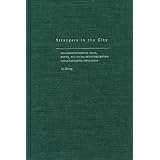
Average Reviews:

(More customer reviews)Are you looking to buy Strangers in the City: Reconfigurations of Space, Power, and Social Networks Within China's Floating Population? Here is the right place to find the great deals. we can offer discounts of up to 90% on Strangers in the City: Reconfigurations of Space, Power, and Social Networks Within China's Floating Population. Check out the link below:
>> Click Here to See Compare Prices and Get the Best Offers
Strangers in the City: Reconfigurations of Space, Power, and Social Networks Within China's Floating Population ReviewThe economic reform that started in China in 1978 has brought about the creation of floating population, in which as many as 100 million people left their villages and streamed into cities where manufacturing factories and businesses were booming. In the cities, these rural migrants are considered strangers and outsiders. Since they are denied formal urban membership and substantive rights, they have to struggle hard for a living space. How did they deal with different powers in order to claim their space and have their own rights guarded and protected?For those interested in knowing about the formation conditions and existence strategies of the floating population in China, Li Zhang's book is worth reading. This is an ethnographic study on a particular migrant enclave in Beijing, which is called Zhejiangcun and only five kilometers from China's political centre, Tiananmen Square. The largest migrant settlement in Beijing, Zhejiangcun is mainly made up by the petty entrepreneurs originating from Wenzhou, a municipal city in Zhejiang province. It took shape in the 1980s and had nearly 100,000 migrant workers in 1995. Making use of pre-accumulated small capital and extended kinship ties, the entrepreneurs run family-based businesses mainly in garment manufacturing and trade. The settlement appears startlingly different from those formed by migrant workers (mingong) who have nothing but their labor to sell and depend heavily on the urban labor market for work. As small manufacturers and traders with economic resources, the Wenzhou migrant entrepreneurs in Zhejiangcun have the edge over other migrant workers as they are more capable to create native-place-based enclaves, workable social connections, and higher business flexibility.
As reflected in the subtitle of the book, Li Zhang explores three key issues - space, power, and social networks. More specifically, she demonstrates how the Wenzhou migrants gained, lost, and rebuilt a space in Beijing by strengthening social networks with fellow natives and forging power relations with the local government officials.
The book is well structured into a chronological order to show the formation and changes of the space in Zhejiangcun. Chapter 1 is a broader analysis of how the Chinese party system attempted to control and to manage the floating population that has grown in numbers in many cities. Li Zhang argues that the rural migrants, while their everyday practices were to some extent regulated by the government, they were able to create "alternative modes of social life and multifocal community life beyond a single, fixed geographic location." (p. 20).
In Chapter 2, Li Zhang traces how a distinctive historical commercial culture and petty capitalist economy nurtured Wenzhou migrant's present economic and spatial practices. She maps their migration routes and underscores the importance of family and native-place networks in the migration trajectories.
Chapters 3 and 4 explore how the privatization of space and power has been taking place concurrently in Zhejiangcun in the context of China's reform into market economy. More specifically, Chapter 3 shows how Wenzhou migrants appropriated land in local villages to create large residential with new social and political meanings. Chapter 3 demonstrates how the migrant leadership emerged and expanded their social and spatial bases of Zhejiangcun.
Once formed, Zhejiangcun evolved with its power structure changing in the space. As Li Zhang shows in Chapter 5, not merely the gender and domestic relations have changed, but the Wenzhou migrant households and production have also reorganized spatially. In the midst of these changes, the social order was damaged by increased crimes. Chapter 6 examines the different interpretations of the origin of crimes offered by the Wenzhou migrants and officials.
The social disorders led to the political conflicts between the upper-level governments and Wenzhou migrants and local residents. The authorities launched a number of cleanup campaigns in Zhejiangcun. Chapter 7 shows that the social conflicts actually involved many levels and the popular resistance during the campaign highlights the disparity, instability, different motivations and interest within the state.
The members of Zhejiangcun were able to challenge and manipulate land-use regulation through clientelist ties with local officials. Indeed, Zhejiangcun has survived the cleanup actions. Li Zhang shows in Chapter 8 that the Wenzhou migrants were able to make a return to Zhejiangcun by forming new commercial alliances with closed-down state factories and local government.
With this book, Li Zhang has tried to address a bigger question: how different components of the Chinese society position themselves in the midst of the rapid economic transformation and the subsequent restructuring of power relations. As indicated in the Conclusion, the point Li Zhang wants to make clear is to "resist the assumption that current societal transformations in China will necessarily lead to the demise of the socialist regime" (p. 208). Indeed Li Zhang has successfully shown that "indigenous petty capitalism coexists with state-owned enterprises and managed foreign capital, which together reshape the contours of Chinese society, one that is based on the interplay of market forces, traditional social relations, and state regulatory power." (p. 208).
I highly recommend this book to those who want to read about the internal migrants and petty entrepreneurs in China in the reform period.Strangers in the City: Reconfigurations of Space, Power, and Social Networks Within China's Floating Population Overview
Want to learn more information about Strangers in the City: Reconfigurations of Space, Power, and Social Networks Within China's Floating Population?
>> Click Here to See All Customer Reviews & Ratings Now
0 comments:
Post a Comment